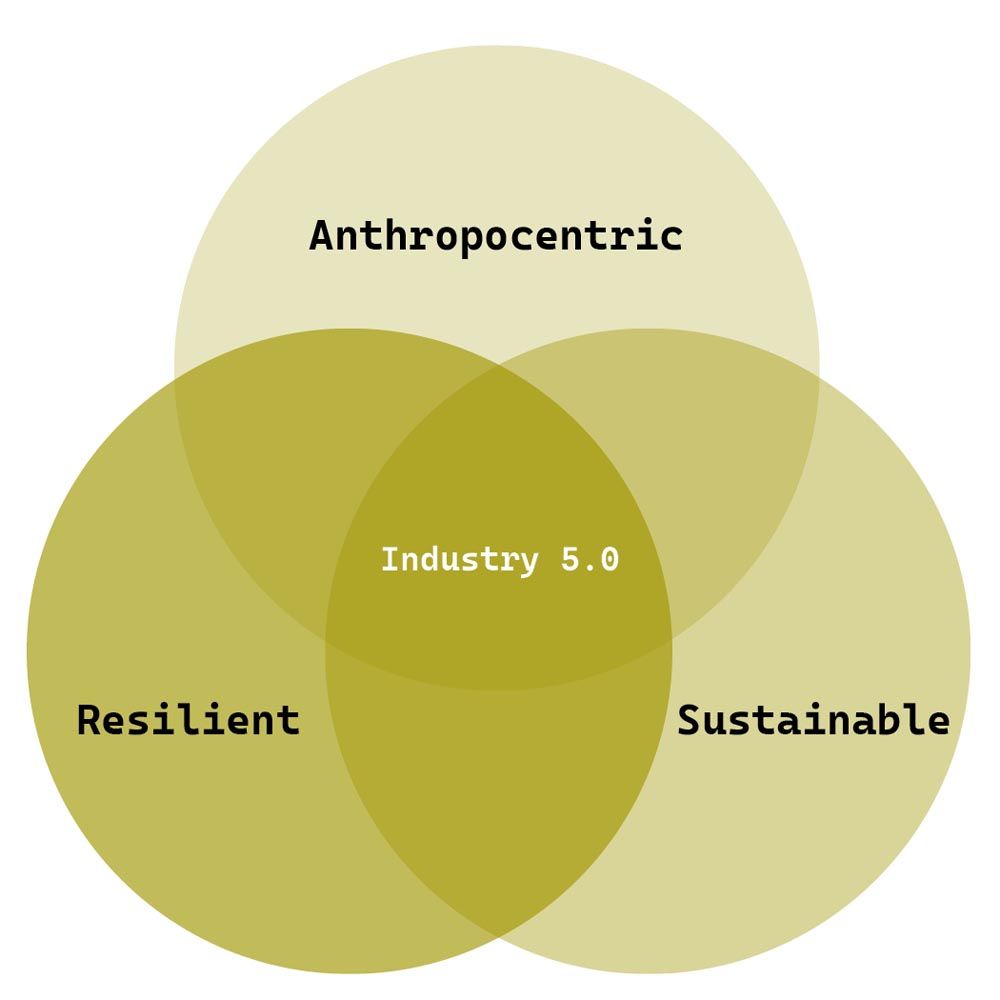Industry 5.0
From economic welfare to societal wellbeing
According to the European Union, the three pillars of Industry 5.0 are anthropocentric, sustainable, and resilient.
According to the European Union’s Research and Innovation Commission, Industry 5.0 “provides a vision of industry that aims beyond efficiency and productivity as the sole goals and reinforces the role and the contribution of industry to society…. It places the wellbeing of the worker at the centre of the production process and uses new technologies to provide prosperity beyond jobs and growth while respecting the production limits of the planet.” Cast another way, Industry 5.0 represents an about-face from the value of economic welfare to the value of societal wellbeing.
Industry 5.0 departs from Industry 4.0 by “specifically putting research and innovation at the service of the transition to a sustainable, human-centric, and resilient European industry.” As the European Commission argues, the strategy is “agile and resilient with flexible and adaptable technologies.” After COVID-19, global shortages of supplies, and the war in Ukraine, it is clear resilience is key to any strategy moving forward—today and in the future.
While agility and flexibility figure prominently on most company agendas, these in themselves do not necessarily translate to resilience. Most business strategies today are driven by efficiency and optimizing profits, not resilience. This focus on efficiency drives many initiatives to make companies more agile and flexible, but leanness leads to less rather than greater resilience.
Where the three pillars of Industry 5.0 are concerned, resilience means the primary focus will no longer be on growth, profit, and efficiency, but on creating organizations that are antifragile, meaning they are able to anticipate, react, and learn—timely and systematically—from all manner of crisis and thereby ensure stable and sustainable performance.
There is no widely accepted definition of Industry 5.0, but the general objective is to decrease the emphasis (not reliance) on technology and reorient the potential for progress based on collaboration among humans and machines utilizing big data analytics, IIoT, collaborative robots, blockchain, digital twins, and future 6G systems to get there.






